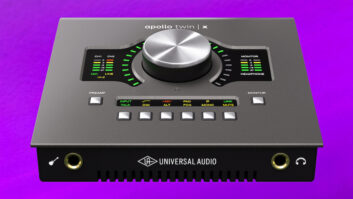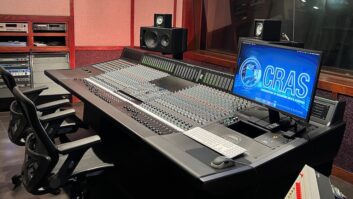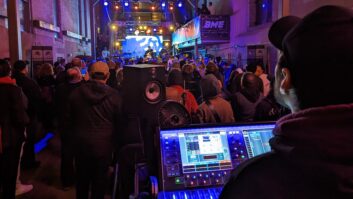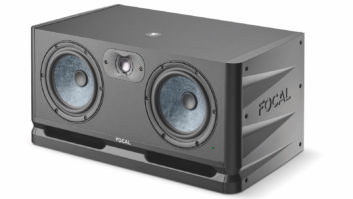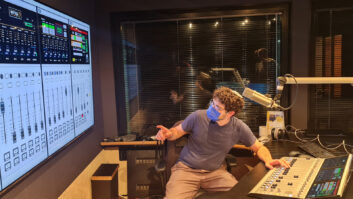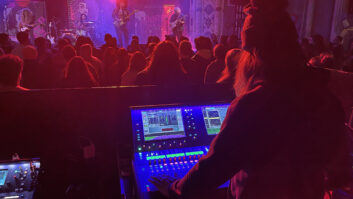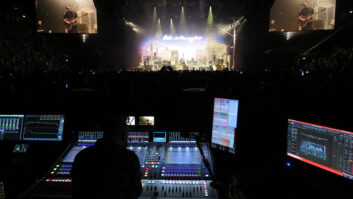WEST HOLLYWOOD, CA—Since opening its doors in 1957, the famed Troubadour nightclub in West Hollywood has featured a variety of sound equipment. Recently, the club, which has played a major role in the careers of many, many artists and bands, found a way to transition from analog to digital FOH control, installing an Avid Venue Profile alongside its existing Soundcraft desk.
The new hybrid approach takes into consideration both the reticence of the club owners to fully commit to a digital console and the expected anxiety of some touring band engineers. The side-by-side approach also continues a tradition at the club, which previously had both the FOH and monitor desks located in the upstairs balcony sound booth.
“The club was really scared about bringing in something digital,” reports Bobby Crown, the venue’s house engineer for the past seven-and-a-half years. “It took a while for people to get warmed up to them. The club, having a reputation, didn’t want to bring in something and have it fail.”
As a major industry showcase venue, the Troubadour certainly has a reputation to maintain. In the 1960s and ’70s it helped establish such artists as The Eagles, Linda Ronstadt, James Taylor and Elton John, and is noted for hosting the first gig by Guns N’ Roses, which was discovered by a rep from Geffen, the company that would go on to sign them.
Originally, two Soundcraft consoles, one for monitors, one for FOH, were positioned in the booth. Band engineers would typically mix their acts while Crown handled monitors. In the new setup, the Avid console replaces the old FOH desk, which has been moved along the bench to replace the monitor board.
There was a hiccup or two initially, he admits. “The first month that we had it, engineers could pick, because I knew people would be kind of scared; I was still nervous,” he recalls. Only one engineer chose to mix on the analog desk, but because of its position, out of line with the stage right PA speakers, it was a bad experience, he reports.
The Soundcraft and Avid consoles are currently wired so that the analog desk offers redundancy in the event of a digital desk crash. “But there haven’t been any issues,” says Crown, who ran through various troubleshooting and changeover scenarios with his assistant, Sean Myers, just in case.
Bobby Crown (left), house engineer at the Troubadour, and assistant Sean Myers, use a unique system of dual analog and digital desks at the venue.Crown has established a basic template in the Avid software to create a starting point for any artist. “Generally, I like to mix with just 16 channels. I like to keep it on the same page. For most of the stuff we get, you can keep it in that zone,” he says, noting that outputs include the main left and right, flown lighting truss boxes and balcony fills.

“I’ll just go to a preset page and load kick, snare, hat, toms. For the most part, they’re all routed to groups the way I like it. All my drums are gated and a little bit compressed; everything that needs to be is high-passed; and the vocals have a basic curve as a starting point. It takes away all that stress of having to assign all that stuff. As the band plays, their engineer can fine-tune it.”
Monitors are also run from the Profile to seven sends. The only inputs not currently fed from the Profile are the vocals, which are still run from the analog desk.
The transition is still a learning experience for Crown, who was 22 years old when he started at the Troubadour, while simultaneously also working at three of the Sunset Strip’s most prestigious clubs—the Roxy, the Key Club and the Viper Room. On a recent show, for example, he says, “The engineer only wanted his main channels, out of order, on the first page, then the channels that he didn’t really use on the second page, and his FX returns rerouted. I’d never done that. I figured it out, and it was real easy. Maybe I’ll start doing that.”
But ultimately, he concludes, it’s not about the gear: “Bands come in and say, ‘Where shall we set up?’ Wherever you want to play. If you’re more comfortable you’re going to play better, and I’m going to mix better. That’s the bottom line.”
Avid
avid.com
The Troubadour
troubadour.com
